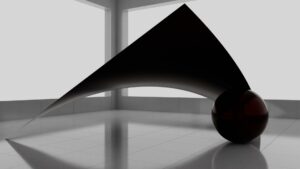
“Feeling is the obscure and indeterminate region of the mind; what is felt remains enveloped in the most abstract form of individual subjectivity” – Hegel The Aesthetic, p87.
Traditionally, a work of art addresses the sensitive faculty of man and seeks to awaken the feeling. Whether it is positive or negative, beautiful or ugly, harmonious or dissonant, the feeling is born from the aesthetic pleasure in front of the work of art. Sensibility is certainly the power to touch, to see, to hear, etc. but above all, it has for object to enter in resonance with the work of art.
Resonance is the phenomenon according to which an artistic creation exercises the senses. If we take music as a vector, the work can accumulate an energy. Different frequencies are at play: that of sounds, harmonies and of course rhythm. With more or less complexity, Arnaud explores the degrees of excitement that a musical creation can generate by playing on the variations of tension / relaxation of each of the frequencies. Thus, by playing on tonal, atonal, modal or dodecaphonic hamrnonies, or by changing the metric and the tempo of rhythmic frequencies, his musical compositions alternate the hamonious and the dissonant, the beautiful and the ugly, the positive and the negative.
These dissipative elements play on the excitement of the senses where the listener will find either a point of rupture or a regime of balance.
With its awakening, the sensitivity is realized in the thing of art by entering in phase with its “frequency”; it is sublimated. It is what Arnaud Quercy calls the resonance of the desire.